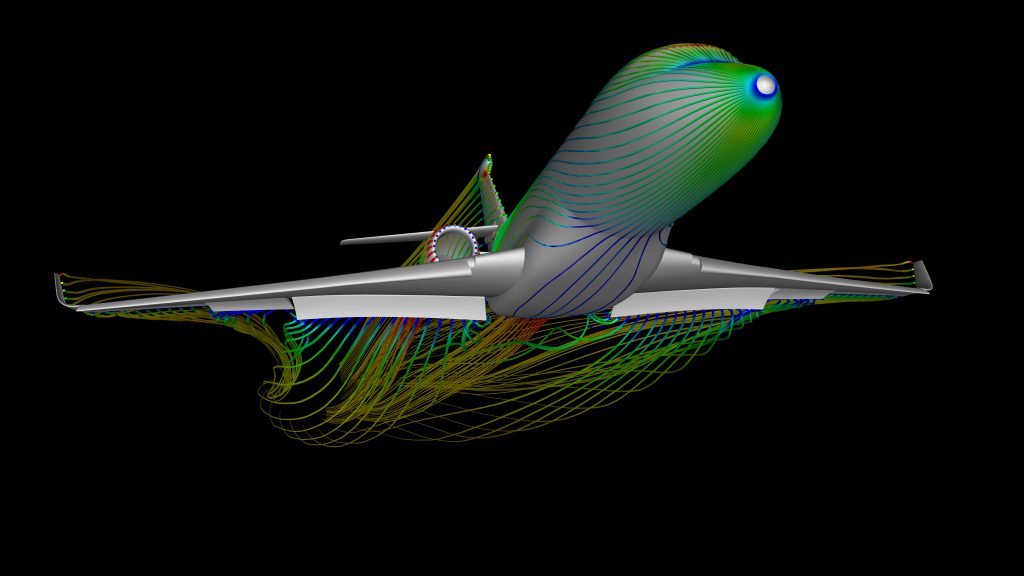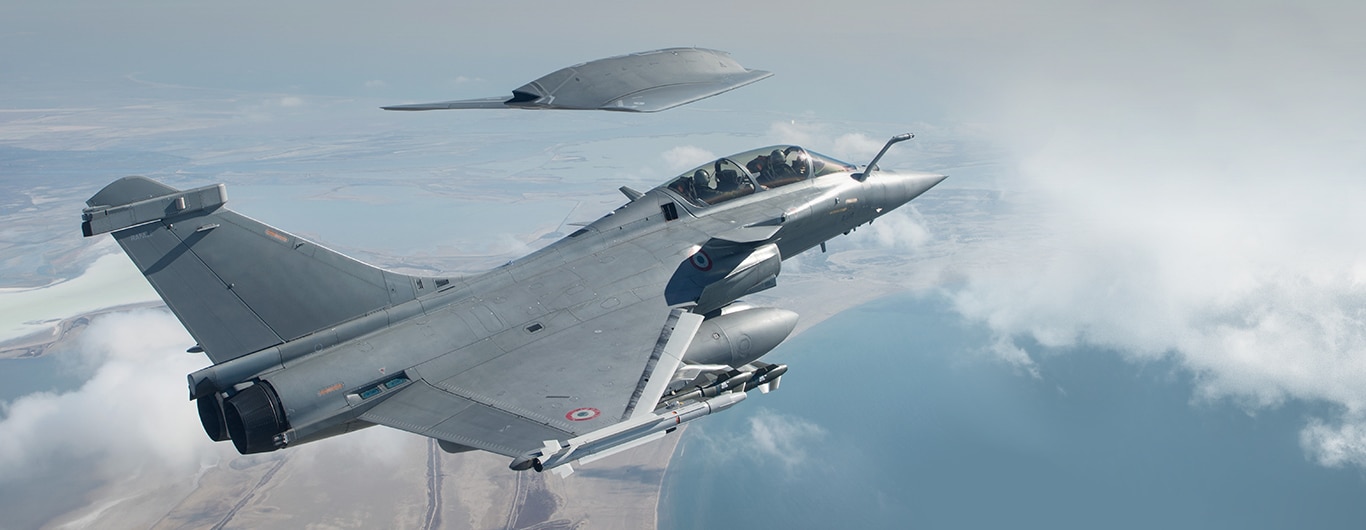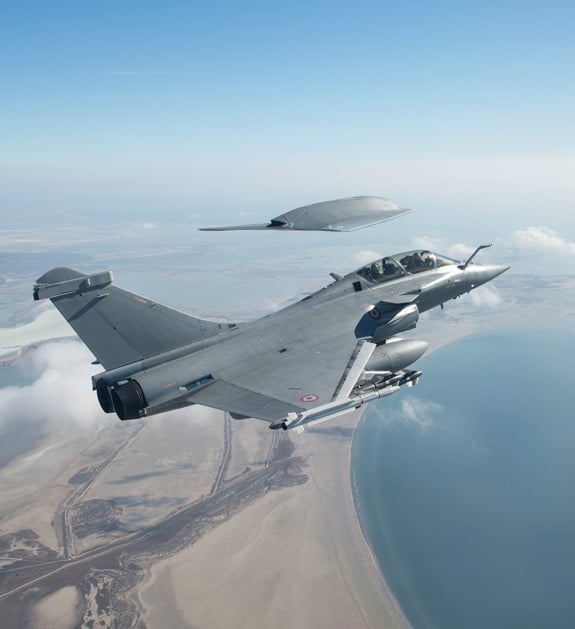Shaping tomorrow’s programs
We deliver complex programs on time and on budget, in line with our customers’ current requirements and future needs. Based on the success of the Rafale and nEUROn, Dassault Aviation naturally expects to play a pivotal role in the structural partnerships shaping the aerospace industry.
Rafale: ongoing upgrades
The Rafale benefits from extensive operating feedback, enabling us to address the evolving requirements of today’s armed forces. The F3-R standard, under development since 2014, will be delivered on schedule in 2018 and deployed by French armed forces in 2019. It will offer a number of improvements, especially the ability to fire the very-long-range Meteor air-to-air missile.
The French government announced the launch of development for the F4 standard in 2017, and awarded a risk reduction contract. This contract is part of the military spending bill for 2019- 2025, which also provides for upgrades to parts of the deterrent force, and lays groundwork for the Future Combat Air System (FCAS), slated for deployment towards 2040. The FCAS will be a system comprising interconnected platforms and weapons, built around a multirole combat aircraft, to cover all types of air combat missions.
nEUROn, a successful European collaboration
The nEUROn program has validated the European collaboration model that we support. The first European UCAV (unmanned combat air system) demonstrator was completed on time and on budget, while producing the expected technological results.
Companies from six European countries played roles in line with their areas of expertise, while Dassault Aviation fulfilled its role as industrial architect and program leader, in charge of making the right choices.
The nEUROn program, launched in 2012, is the first stealthy UCAV to date to be developed as part of a joint European program. Tests are generating incisive data on this type of strategic system, especially on its very-low observability (VLO) qualities. Considered highly productive, these different tests will continue in the coming years.
Pragmatic programs
Dassault Aviation has amply demonstrated its ability to work effectively with partners on future air combat systems, and to develop the technological building blocks and operational concepts needed. We blazed this path starting in 2014, with a joint program in collaboration with the United Kingdom. The French-German initiative dating from July 2017 continues along this path, based on a European combat aircraft in which Dassault Aviation naturally expects to play its traditional role as the lead industrial architect for key systems.
We are contributing to a new drone called MALE RPAS (medium-altitude, long-endurance remotely piloted aircraft system), which has kicked off a two-year design study phase. Led by Airbus Defence & Space, with Leonardo and Dassault Aviation as co-contractors, this program should be launched in early 2019.
Future Falcons
In the civil aviation sector, for the last few months we have been gearing up for the launch of a new Falcon, which will join the family alongside the Falcon 6X, launched in February 2018. Partners from the European and North American aviation industries will play a major role on these new programs, with a focus on aerostructures, engines and systems.
We are also working on upgrading our special-mission Falcon jets, especially for intelligence (including integration of universal electronic warfare capability, CUGE), surveillance and maritime patrol, while bolstering their interoperability in tactical environments combining satellites, drones and combat aircraft.

Computational Fluid Dynamics © Dassault Aviation


